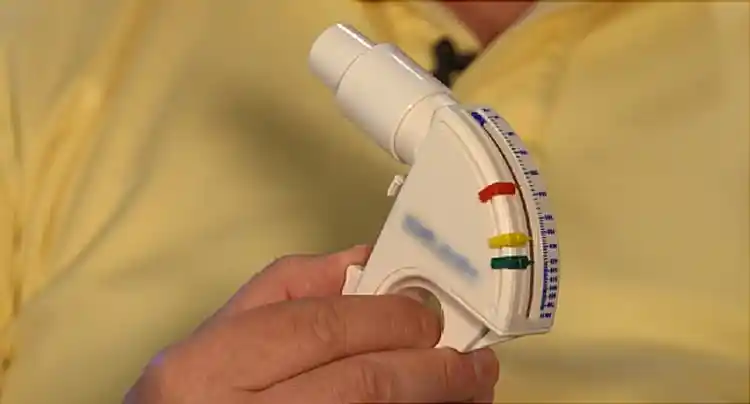Understand Your Severe Asthma Treatment Plan

Hide Video Transcript
Video Transcript
[MUSIC PLAYING]
For some, we work out literally a written plan. These plans give you some suggested ideas about what you should do. In general, we work out those plans. We customize them. You may simply step to a higher dose of inhaled corticosteroid. It could also be the case that you would want to go on an additional medication.
For the more severe asthmatics that we see, we treat them with steroids. There are a lot of what I would call immunotherapy that are basically once a month injections that will dramatically improve their airflows and keep them from having recurrent attacks. So there are lots of options in terms of customizing a plan, with our goal being, of course, to keep the patient feeling well and to keep them out of the hospital.
THOMAS DEMARINI
Everybody has either had some problems with wheezing, coughing, shortness of breath, or knows somebody who has those symptoms and has watched them struggle to breathe. The whole purpose is to prevent the exacerbation from taking hold and progressing on its natural course. A lot of patients with asthma, especially if it's in the more severe category, we have them use a device called a peak flow meter. It's a simple handheld device, and it can measure how much flow you're getting in a second when you're breathing out. We usually say that if you're having a 20% drop, that you've got something going on. If you're going down to a 40% or 50% reduction in your peak flow, then you're going to have real trouble. For some, we work out literally a written plan. These plans give you some suggested ideas about what you should do. In general, we work out those plans. We customize them. You may simply step to a higher dose of inhaled corticosteroid. It could also be the case that you would want to go on an additional medication.
For the more severe asthmatics that we see, we treat them with steroids. There are a lot of what I would call immunotherapy that are basically once a month injections that will dramatically improve their airflows and keep them from having recurrent attacks. So there are lots of options in terms of customizing a plan, with our goal being, of course, to keep the patient feeling well and to keep them out of the hospital.
